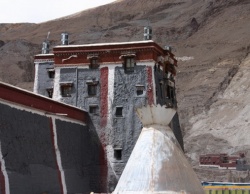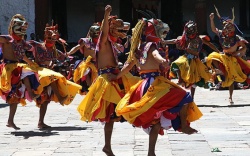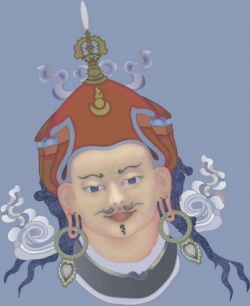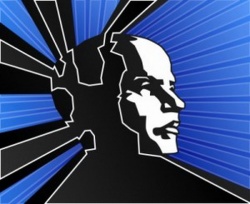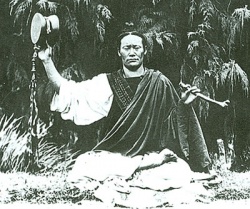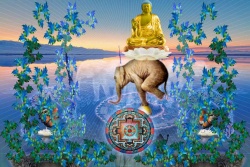Difference between revisions of "Shamarpa"
| (14 intermediate revisions by 4 users not shown) | |||
| Line 1: | Line 1: | ||
| − | [[File:Shamarpa teaching, from his website.jpg|thumb|Shamar Rinpoche teaching]] | + | [[File:Shamarpa teaching, from his website.jpg|thumb|Shamar Rinpoche teaching]]<nomobile>{{DisplayImages|3280|1221|1536|1787|648|4441}}</nomobile> |
| − | |||
| − | |||
| − | |||
| − | |||
| − | * Khedrup Drakpa Senge (1284–1349) was the principal disciple of the 3rd Karmapa. | + | |
| − | * Shamar Khachö Wangpo (1350–1405) was recognized by the 4th Karmapa. | + | |
| − | * Shamar Chöpal Yeshe (1406–1452). Chöpal Yeshe is renowned for having constructed several monasteries and retreat-centers. He was also able to abolish the practice of animal sacrifice in the regions of Tibet where that custom had continued. | + | |
| − | * Shamar Chokyi Drakpa Yeshe Pal Zangpo (1453–1526) was recognized by the 7th Karmapa, who became his Lama. The famous Tibetan monastery Ga Mamo Tashi Rabten was founded by him. He also established many smaller monasteries. During his travels outside Tibet, Chökyi Tragpa built many monasteries, among others there are four monasteries in Bhutan and he was the first of the Shamar reincarnates to visit Nepal where he built a small monastery in Swayambhunath, one of the country’s most sacred places. Upon returning to his home-land, he acted as the king of Tibet for a period of twelve years and he ruled the country on the basis of strict adherence to Buddhist principles. | + | |
| − | * Shamar Köncho Yenlak (1526–1583) was identified by the 8th Karmapa. He also recognized and became the Lama of the 9th Karmapa. | + | |
| − | * Shamar Mipan Chökyi Wangchuk (1584–1629) was recognized by the 9th Karmapa who was his main Lama. | + | [[Shamarpa]] ([[Tibetan]]: {{BigTibetan|[[ཞྭ་དམར་པ་]]}}, [[Wylie]]: [[Zhwa-dmar-pa]]; literally, "[[Person]] [[Holder of the Red Crown]]"), |
| − | * Shamar Yeshe Nyinpo (1631–1694) was recognized by the 10th Karmapa, and he became the Karmapa’s disciple. | + | |
| − | * Palchen Chökyi Döndrup (1695–1732) was born in Yilmo, Nepal and was taken to Tibet at age 7. He received teachings and instructions from the 11th Karmapa before his death. The Shamarpa in turn, recognized and enthroned 12th Karmapa as the 12th Karmapa and acted as his Root-guru. | + | also known as [[Shamar Rinpoche]] or more formally [[Kunzig Shamar Rinpoche]] is a [[lineage holder]] of the [[Karma Kagyu school]] of [[Tibetan Buddhism]] and the [[mind manifestation]] of [[Amitabha Buddha]]. |
| − | * Könchog Geway Jungnay (1733–1741) was born in Paro in Bhutan, and was discovered by the 13th Karmapa, 13th Karmapa but lived only until age nine | + | |
| − | * Mipam Chödrup Gyamtso (1742–1793) was the stepbrother of the 6th Panchen Lama, Lobsang Palden Yeshe (1738–1780). A dispute over his claim to his stepbrother's material inheritance led to an armed conflict in which the Shamarpa conspired with the Nepalese Gurkha army in 1788. This, and other disputes between the Gelug and Kagyu schools led to the exile from Tibet of the Shamarpa and a legal ban by the Tibetan government on further Shamarpa incarnations This ban remained in place until after the Dalai Lama lost power in Tibet during the 1950s, although it was later revealed that the Karmapa had recognized reincarnations of the Shamarpa secretly during the intervening period. | + | He is [[traditionally]] associated with [[Yangpachen monastery]] near {{Wiki|Lhasa}}. |
| − | * Unknown, presumed forced into hiding by the Tibetan government. | + | |
| − | * Tugsay Jamyang (1895–1947) was the son of the 15th Karmapa. However, it is recorded that he taught and practiced Buddhism as a layman. | + | The [[first Shamarpa]], [[Khedrup Drakpa Senge]] (1283–1349), was the [[principal]] [[disciple]] of the [[third Karmapa]], [[Rangjung Dorje]]. |
| − | * Tinlay Kunchap (1948–1950), an infant who survived only a little over a year | + | |
| − | * [[Mipham Chokyi Lodro]] (1952–) was born in Derge, Tibet and at the age of four he was recognized by the 16th Karmapa | + | [[Rangjung Dorje]] gave this [[disciple]] a ruby-red {{Wiki|crown}} and the title [[Shamarpa]], establishing the [[second line of reincarnate lamas]] in [[Tibetan Buddhism]], [[Karmapa]] [[being]] the first. |
| + | |||
| + | This is taken to be the fulfillment of a {{Wiki|prediction}} of the [[second Karmapa]], [[Karma Pakshi]], who said "Future [[Karmapas]] will [[manifest]] in two [[forms]]". | ||
| + | |||
| + | When [[the fourth]] [[Karmapa]], [[Rolpe Dorje]], returned the [[red]] {{Wiki|crown}} to the second [[Shamarpa]], he recalled [[Karma Pakshi's]] {{Wiki|prediction}}, saying, "You are the one [[manifestation]], while I am the other. | ||
| + | |||
| + | Therefore, the {{Wiki|responsibility}} to maintain the continuity of the teachings of the [[Kagyu lineage]] rests equally on you as it does on me." The [[Shamarpa]] is often referred to as the "[[Red-hat Karmapa]]," especially in early [[Kagyu]] texts. | ||
| + | |||
| + | |||
| + | ==The [[Shamarpa lineage]]== | ||
| + | |||
| + | |||
| + | The successive [[Shamarpa]] [[reincarnations]] are listed in "The [[Garland of Moon Water Crystal]]" by the [[8th Tai Situpa Chökyi Jungne]] and [[Belo Tsewang Künkhyab]]. | ||
| + | |||
| + | * [[Khedrup Drakpa Senge]] (1284–1349) was the [[principal]] [[disciple]] of the [[3rd Karmapa]]. | ||
| + | |||
| + | * [[Shamar Khachö Wangpo]] (1350–1405) was [[recognized]] by the [[4th Karmapa]]. | ||
| + | |||
| + | * [[Shamar Chöpal Yeshe]] (1406–1452). [[Chöpal Yeshe]] is renowned for having [[constructed]] several [[monasteries]] and [[retreat]]-centers. He was also able to abolish the practice of [[animal]] {{Wiki|sacrifice}} in the regions of [[Tibet]] where that {{Wiki|custom}} had continued. | ||
| + | |||
| + | |||
| + | * [[Shamar Chokyi Drakpa Yeshe Pal Zangpo]] (1453–1526) was [[recognized]] by the [[7th Karmapa]], who became his [[Lama]]. The famous [[Tibetan]] [[monastery]] [[Ga Mamo Tashi Rabten]] was founded by him. | ||
| + | |||
| + | He also established many smaller [[monasteries]]. During his travels outside [[Tibet]], [[Chökyi Tragpa]] built many [[monasteries]], among others there are four [[monasteries]] in [[Bhutan]] and he was the first of the [[Shamar]] [[reincarnates]] to visit [[Nepal]] where he built a small [[monastery]] in [[Swayambhunath]], one of the country’s most [[sacred]] places. | ||
| + | |||
| + | Upon returning to his home-land, he acted as the [[king]] of [[Tibet]] for a period of twelve years and he ruled the country on the basis of strict adherence to [[Buddhist]] {{Wiki|principles}}. | ||
| + | |||
| + | |||
| + | * [[Shamar Köncho Yenlak]] (1526–1583) was identified by the [[8th Karmapa]]. He also [[recognized]] and became the [[Lama]] of the [[9th Karmapa]]. | ||
| + | |||
| + | * [[Shamar Mipan Chökyi Wangchuk]])] (1584–1629) was [[recognized]] by the [[9th Karmapa]] who was his main [[Lama]]. | ||
| + | |||
| + | * [[Shamar Yeshe Nyinpo]] (1631–1694) was [[recognized]] by the [[10th Karmapa]], and he became the [[Karmapa’s]] [[disciple]]. | ||
| + | |||
| + | * [[Palchen Chökyi Döndrup]] (1695–1732) was born in Yilmo, [[Nepal]] and was taken to [[Tibet]] at age 7. | ||
| + | |||
| + | He received teachings and instructions from the [[11th Karmapa]] before his [[death]]. | ||
| + | |||
| + | The [[Shamarpa]] in turn, [[recognized]] and [[enthroned]] [[12th Karmapa]] as the [[12th Karmapa]] and acted as his [[Root-guru]]. | ||
| + | |||
| + | * [[Könchog Geway Jungnay]] (1733–1741) was born in [[Paro]] in [[Bhutan]], and was discovered by the [[13th Karmapa]], [[13th Karmapa]] but lived only until age nine | ||
| + | |||
| + | * [[Mipam Chödrup Gyamtso]] (1742–1793) was the stepbrother of the [[6th Panchen Lama]], [[Lobsang Palden Yeshe]] (1738–1780). | ||
| + | |||
| + | A dispute over his claim to his stepbrother's {{Wiki|material}} inheritance led to an armed conflict in which the [[Shamarpa]] conspired with the {{Wiki|Nepalese}} {{Wiki|Gurkha}} {{Wiki|army}} in 1788. | ||
| + | |||
| + | This, and other [[disputes]] between the [[Gelug]] and [[Kagyu]] schools led to the exile from [[Tibet]] of the [[Shamarpa]] and a legal ban by the [[Tibetan]] government on further [[Shamarpa incarnations]]. | ||
| + | |||
| + | This ban remained in place until after the [[Dalai Lama]] lost [[power]] in [[Tibet]] during the 1950s, although it was later revealed that the [[Karmapa]] had [[recognized]] [[reincarnations]] of the [[Shamarpa]] secretly during the intervening period. | ||
| + | |||
| + | * Unknown, presumed forced into hiding by the [[Tibetan]] government. | ||
| + | |||
| + | * [[Tugsay Jamyang]] (1895–1947) was the son of the [[15th Karmapa]]. However, it is recorded that he [[taught]] and practiced [[Buddhism]] as a [[layman]]. | ||
| + | |||
| + | * [[Tinlay Kunchap]] (1948–1950), an {{Wiki|infant}} who survived only a little over a year | ||
| + | |||
| + | * [[Mipham Chokyi Lodro]] (1952–) was born in [[Derge]], [[Tibet]] and at the age of four he was [[recognized]] by the [[16th Karmapa]] | ||
| + | |||
==Controversy== | ==Controversy== | ||
| − | |||
| − | + | In 1792, the [[Tibetan]] government found the [[10th Shamarpa]] guilty of inciting a [[war]] between [[Tibet]] and [[Nepal]]. | |
| + | |||
| + | He was exiled from [[Tibet]] and a ban placed on his {{Wiki|future}} [[incarnations]], thereby abolishing the [[Shamarpa line]]. | ||
| + | |||
| + | In 1963, following a request from the [[16th Karmapa]], the [[Tibetan Government in Exile]] lifted the ban. | ||
| − | |||
| − | The 14th Shamarpa presently resides in India. | + | ==Present [[Shamarpa]]== |
| + | |||
| + | |||
| + | The {{Wiki|present}} (14th) [[Shamarpa]] is [[Mipham Chokyi Lodro]], born in [[Derge]], [[Tibet]] in 1952. | ||
| + | |||
| + | At age four he was [[recognized]] by his uncle the [[16th Karmapa]]. He remained with the [[16th Karmapa]] until his [[death]] in 1981. | ||
| + | |||
| + | He received the entire cycle of [[Kagyu]] teachings from H.H. [[16th Karmapa]]. | ||
| + | |||
| + | After the [[death]] of the [[16th Karmapa]], [[Shamarpa]] [[recognized]] [[Thaye Dorje]] as the [[17th Karmapa]] in 1994. | ||
| + | |||
| + | His choice is backed by great [[masters]] as [[Chobkye Tri Rinpoche]], [[Lopön Chechu Rinpoche]], [[Lama Gendün Rinpoche]], the [[16th Karmapa's]] european representative [[Jigme Rinpoche]] and many others. | ||
| + | |||
| + | [[Ogyen Trinley Dorje]] is held to be the [[17th Karmapa]] by other major [[teachers]] of the [[Karma Kagyu]] [[lineage]] ([[including]] the [[12th Situ Rinpoche]], the [[12th Gyaltsab Rinpoche]], the [[7th Dzogchen Ponlop Rinpoche]], the [[9th Thrangu Rinpoche]], the [[7th Mingyur Rinpoche]]) along with [[Sakya Trizin]] ({{Wiki|head}} of the [[Sakya Lineage]]), who acknowledges [[Karmapa Thaye Dorje]] as well and the [[14th Dalai Lama]]. | ||
| + | |||
| + | (see [[Karmapa controversy]]). | ||
| + | |||
| + | The 14th [[Shamarpa]] presently resides in [[India]]. | ||
{{R}} | {{R}} | ||
| Line 37: | Line 109: | ||
[[Category:Tibetan Buddhist Teachers]] | [[Category:Tibetan Buddhist Teachers]] | ||
| − | [[Category: | + | [[Category:Shamarpa's]] |
| + | |||
[[Category:Tibetan Buddhist titles]] | [[Category:Tibetan Buddhist titles]] | ||
__NOTOC__ | __NOTOC__ | ||
Latest revision as of 08:19, 22 December 2023
Shamarpa (Tibetan: ཞྭ་དམར་པ་, Wylie: Zhwa-dmar-pa; literally, "Person Holder of the Red Crown"),
also known as Shamar Rinpoche or more formally Kunzig Shamar Rinpoche is a lineage holder of the Karma Kagyu school of Tibetan Buddhism and the mind manifestation of Amitabha Buddha.
He is traditionally associated with Yangpachen monastery near Lhasa.
The first Shamarpa, Khedrup Drakpa Senge (1283–1349), was the principal disciple of the third Karmapa, Rangjung Dorje.
Rangjung Dorje gave this disciple a ruby-red crown and the title Shamarpa, establishing the second line of reincarnate lamas in Tibetan Buddhism, Karmapa being the first.
This is taken to be the fulfillment of a prediction of the second Karmapa, Karma Pakshi, who said "Future Karmapas will manifest in two forms".
When the fourth Karmapa, Rolpe Dorje, returned the red crown to the second Shamarpa, he recalled Karma Pakshi's prediction, saying, "You are the one manifestation, while I am the other.
Therefore, the responsibility to maintain the continuity of the teachings of the Kagyu lineage rests equally on you as it does on me." The Shamarpa is often referred to as the "Red-hat Karmapa," especially in early Kagyu texts.
The Shamarpa lineage
The successive Shamarpa reincarnations are listed in "The Garland of Moon Water Crystal" by the 8th Tai Situpa Chökyi Jungne and Belo Tsewang Künkhyab.
- Khedrup Drakpa Senge (1284–1349) was the principal disciple of the 3rd Karmapa.
- Shamar Khachö Wangpo (1350–1405) was recognized by the 4th Karmapa.
- Shamar Chöpal Yeshe (1406–1452). Chöpal Yeshe is renowned for having constructed several monasteries and retreat-centers. He was also able to abolish the practice of animal sacrifice in the regions of Tibet where that custom had continued.
- Shamar Chokyi Drakpa Yeshe Pal Zangpo (1453–1526) was recognized by the 7th Karmapa, who became his Lama. The famous Tibetan monastery Ga Mamo Tashi Rabten was founded by him.
He also established many smaller monasteries. During his travels outside Tibet, Chökyi Tragpa built many monasteries, among others there are four monasteries in Bhutan and he was the first of the Shamar reincarnates to visit Nepal where he built a small monastery in Swayambhunath, one of the country’s most sacred places.
Upon returning to his home-land, he acted as the king of Tibet for a period of twelve years and he ruled the country on the basis of strict adherence to Buddhist principles.
- Shamar Köncho Yenlak (1526–1583) was identified by the 8th Karmapa. He also recognized and became the Lama of the 9th Karmapa.
- Shamar Mipan Chökyi Wangchuk)] (1584–1629) was recognized by the 9th Karmapa who was his main Lama.
- Shamar Yeshe Nyinpo (1631–1694) was recognized by the 10th Karmapa, and he became the Karmapa’s disciple.
- Palchen Chökyi Döndrup (1695–1732) was born in Yilmo, Nepal and was taken to Tibet at age 7.
He received teachings and instructions from the 11th Karmapa before his death.
The Shamarpa in turn, recognized and enthroned 12th Karmapa as the 12th Karmapa and acted as his Root-guru.
- Könchog Geway Jungnay (1733–1741) was born in Paro in Bhutan, and was discovered by the 13th Karmapa, 13th Karmapa but lived only until age nine
- Mipam Chödrup Gyamtso (1742–1793) was the stepbrother of the 6th Panchen Lama, Lobsang Palden Yeshe (1738–1780).
A dispute over his claim to his stepbrother's material inheritance led to an armed conflict in which the Shamarpa conspired with the Nepalese Gurkha army in 1788.
This, and other disputes between the Gelug and Kagyu schools led to the exile from Tibet of the Shamarpa and a legal ban by the Tibetan government on further Shamarpa incarnations.
This ban remained in place until after the Dalai Lama lost power in Tibet during the 1950s, although it was later revealed that the Karmapa had recognized reincarnations of the Shamarpa secretly during the intervening period.
- Unknown, presumed forced into hiding by the Tibetan government.
- Tugsay Jamyang (1895–1947) was the son of the 15th Karmapa. However, it is recorded that he taught and practiced Buddhism as a layman.
- Tinlay Kunchap (1948–1950), an infant who survived only a little over a year
- Mipham Chokyi Lodro (1952–) was born in Derge, Tibet and at the age of four he was recognized by the 16th Karmapa
Controversy
In 1792, the Tibetan government found the 10th Shamarpa guilty of inciting a war between Tibet and Nepal.
He was exiled from Tibet and a ban placed on his future incarnations, thereby abolishing the Shamarpa line.
In 1963, following a request from the 16th Karmapa, the Tibetan Government in Exile lifted the ban.
Present Shamarpa
The present (14th) Shamarpa is Mipham Chokyi Lodro, born in Derge, Tibet in 1952.
At age four he was recognized by his uncle the 16th Karmapa. He remained with the 16th Karmapa until his death in 1981.
He received the entire cycle of Kagyu teachings from H.H. 16th Karmapa.
After the death of the 16th Karmapa, Shamarpa recognized Thaye Dorje as the 17th Karmapa in 1994.
His choice is backed by great masters as Chobkye Tri Rinpoche, Lopön Chechu Rinpoche, Lama Gendün Rinpoche, the 16th Karmapa's european representative Jigme Rinpoche and many others.
Ogyen Trinley Dorje is held to be the 17th Karmapa by other major teachers of the Karma Kagyu lineage (including the 12th Situ Rinpoche, the 12th Gyaltsab Rinpoche, the 7th Dzogchen Ponlop Rinpoche, the 9th Thrangu Rinpoche, the 7th Mingyur Rinpoche) along with Sakya Trizin (head of the Sakya Lineage), who acknowledges Karmapa Thaye Dorje as well and the 14th Dalai Lama.
(see Karmapa controversy).
The 14th Shamarpa presently resides in India.

